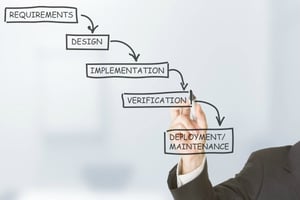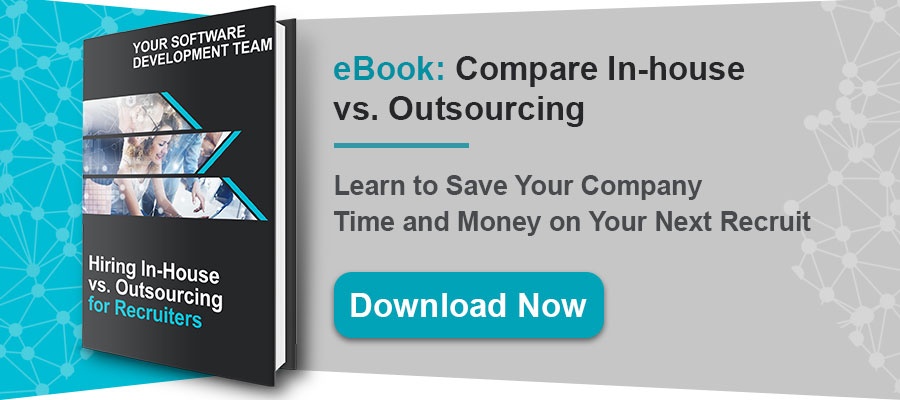

Choosing a software development lifecycle (SDLC) can be a tedious process and can be overwhelming if you are not experienced in differentiating the distinction between them. The one you choose for your project depends on numerous factors that are specific to your scenario and tailored to your needs.
Here, we will go over a few of the main SDLCs and which types of projects best suits each one:
- Waterfall Model: The first and most commonly used is the waterfall model which sees development go from each stage to the next, only after the previous stage is complete. This model is best when the requirements of the project are not changed from the initial request for proposals, as there is no need to revert to earlier stages once they are complete.
- V-Shaped Model: The V-Shaped Model is a later evolution of the waterfall model. After implementation and coding (what would be the end phase in the waterfall model), the V-shape bends back up to encompass two mirroring sides. The second half you plan at the beginning of the V-shape model in testing phases. Use this model when software requirements, development technologies, and tools are well known.
 Evolutionary Prototyping Model: To limit misunderstandings between customer requirements and software development teams, developers often first develop a prototype model. Which they use to create an incomplete version of the software that can help both the customer and the development team better visualize the project before the development of the actual software begins. In evolutionary prototyping, the incomplete version of the software will evolve into the complete version through a reiterative user feedback loop. This model is useful for systems with user interactions. The time and costs of developing the prototype should be worth the time and costs saved by omitting errors that will manifest when user interactions begin.
Evolutionary Prototyping Model: To limit misunderstandings between customer requirements and software development teams, developers often first develop a prototype model. Which they use to create an incomplete version of the software that can help both the customer and the development team better visualize the project before the development of the actual software begins. In evolutionary prototyping, the incomplete version of the software will evolve into the complete version through a reiterative user feedback loop. This model is useful for systems with user interactions. The time and costs of developing the prototype should be worth the time and costs saved by omitting errors that will manifest when user interactions begin.
- Spiral Method (SDM): The spiral method combines elements of both the waterfall and prototyping methods, essentially providing a perfect mixture of top-down and bottom-up conceptualization. This model is efficient for large, expensive, and lengthy duration projects, as it values increased planning, risk assessment and avoidance, and the customer-developer feedback loop.
- Iterative and Incremental Method: Developed to overcome the shortcomings of the waterfall model, the iterative and incremental method is a series of mini waterfalls of V-shape cycles, and is a system of repeated cycles in smaller proportions than that of the waterfall. This method is useful for large networks with smaller components, such as enterprise resource planning.
- Agile development: Based on the iterative and incremental development, the Agile method uses collaboration between cross-functional teams. Agile can be used with any project in which the customer is available to be engaged during the development process.
Related Content: 8 Advantages to Using the Agile Software Development Life Cycle Method
There are many things to consider when choosing a software development lifecycle. But regardless of which one you think is best, it is often wise to involve stakeholders outside of the software development team when making this decision. The customer’s ability and willingness to participate, as well as the business development team’s insight on hidden costs can make or break the success of your project. So choose wisely, and with as much support and insight as you can.
>> Connect with Bydrec on LinkedIn to get more valuable content!



